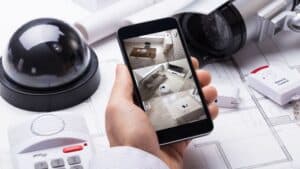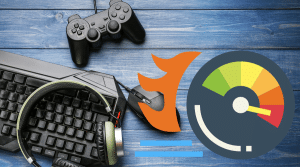As a home improvement expert who has renovated hundreds of bathrooms, I‘m often asked if using Clorox bleach tablets to clean toilets can damage them over time. In this comprehensive guide, I‘ll take an in-depth look at how bleach tablets work, their risks and benefits, and provide tips to clean your toilet safely and effectively.
How Do Toilet Bleach Tablets Work?
Tablets like Clorox Bleach Tablets work by slowly dissolving with each flush, releasing a diluted bleach solution into the toilet bowl. But how does the bleach actually clean and disinfect the porcelain?
The active ingredient in bleach is sodium hypochlorite. When this comes into contact with organic waste, bacteria, and germs, a chemical reaction occurs that essentially destroys their chemical structure.
The sodium hypochlorite acts as an oxidizing agent, transferring oxygen to the contaminants, which effectively burns and disintegrates them off surfaces. This oxidation also discolors and lifts stains in the porcelain. The overall result is a cleaner, brighter, and more hygienic toilet bowl.
Why Disinfecting Your Toilet is Critical
Maintaining a clean, germ-free toilet is incredibly important for your health. Research shows that toilets can harbor a wide range of dangerous bacteria and viruses.
In fact, there are estimates that the average toilet may have up to 50,000 germs per square inch! Diseases like salmonella, E. coli, the flu virus, and even staph have been found in toilets.
Proper toilet hygiene is critical to prevent the spread of illnesses through your household. Disinfecting kills the germs that cause these toilet diseases.
The Center for Disease Control recommends using EPA-approved disinfectants like bleach to properly sanitize bathrooms.
Are Bleach Tablets Safe for Your Toilet?
When used according to the manufacturer‘s directions, toilet bleach tablets are generally safe for most modern toilet systems. However, many homeowners still worry about potential damage. Here are the key concerns:
Tank Components
The bleach solution can degrade rubber or plastic parts like flappers and gaskets over time. I recommend inspecting these components occasionally for deterioration and replacing them every 2 years.
Metal Fixtures
Prolonged exposure to the bleach may corrode metal fixtures or hardware inside the tank. Use tablets sparingly and check for corrosion every 6 months.
Porcelain Damage
Overuse of bleach tablets can potentially cause stains or discoloration of the porcelain bowl. Limit to 1 tablet per week and always thoroughly rinse the bowl after use.
Septic Systems
Bleach may disrupt the microbial balance in septic systems, so check regulations in your area before use. Many bleach tablet brands are now certified septic-safe though.
Older Toilets
The bleach can be too harsh on components in older toilets. I‘d recommend using alternative disinfectants.
For comparison, here is a table of some top toilet bleach tablet products:
| Brand | Active Ingredient | Tablets Per Pack | Septic Safe |
|---|---|---|---|
| Clorox | Sodium Hypochlorite | 12 | Yes |
| Lysol | Sodium Dichloroisocyanurate | 6 | Yes |
| Scrubbing Bubbles | Sodium Dichloroisocyanurate | 4 | No |
Using Bleach Tablets Correctly
Follow these tips when using bleach tablets to avoid damages:
-
Carefully read and follow dosage instructions on the package
-
Check if approved for your specific toilet model
-
Never mix tablets with other cleaning products
-
Limit to 1 tablet per toilet per week
-
Thoroughly scrub and rinse the bowl after use
-
Flush several times to prevent concentration
-
Inspect tank components regularly for deterioration
-
For tough stains, try alternative cleaners first
Signs of Toilet Damage from Bleach
As a home renovation specialist, I‘ve seen toilets damaged by improper bleach usage. Here‘s what to watch out for:
-
Stained or discolored porcelain
-
Slow leaks around the base of the toilet
-
Visible corrosion on metal bolts, fittings, or components
-
Degraded or cracked rubber gaskets and flappers
-
Low water level in tank due to damaged fill valve
-
Odors coming from under the tank
If you notice any of these signs, discontinue bleach tablet use immediately. The damage may require replacement of toilet parts or re-sealing the toilet base if leaks occur. Catching issues early makes repairs much easier.
Cleaning Your Toilet Without Bleach
Regular toilet cleaning provides the light scrubbing required to prevent stains from building up in the first place. For a safer routine toilet maintenance regimen, I recommend these methods using common household products:
Baking Soda and Vinegar
Create a paste with baking soda and vinegar and spread around the bowl. Let sit 30 minutes before scrubbing and flushing. The combination of acid and base helps lift grime.
Hydrogen Peroxide
Spray 3% hydrogen peroxide solution inside the bowl and let sit 20 minutes before scrubbing with a toilet brush. Hydrogen peroxide is a natural disinfectant.
Liquid Toilet Cleaners
Look for an eco-friendly liquid toilet cleaner made for regular use. Scrub the bowl weekly to prevent stains. Avoid harsh bleach-based cleaners.
Toilet Wand Cleaners
For quick cleaning between deep scrubs, toilet wand cleaners with disposable scrubber heads make sanitizing easy.
Pumice Stone
A pumice stone easily lifts stubborn hard water stains and mineral buildup rings. Lightly scrub the stained area with the stone.
The Bottom Line
Properly using toilet bleach tablets involves carefully following usage guidelines and avoiding overuse. When used sparingly, tablets provide an effective method to keep your toilet clean and disinfected. However, be watchful for any signs of damage, and consider supplemental cleaning methods. With the right toilet care regimen, you can keep your bathroom hygienic and prevent damage.
As your resident toilet expert, please feel free to reach out if you have any other plumbing or home renovation questions!








